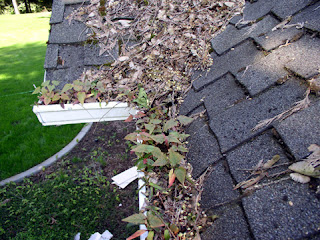What's on your Suffolk County Roof
| Soft Wash Roof Cleaning 631-588-5032 www.softwasli.com Species: | G. magma |
| Binomial name | |
|---|---|
| Gloeocapsa magma | |
The main reasons for the rapid spread and noticeability of these cyanobacteria are thought to be:
1. Rising humidity and temperatures combined with more and more bacteria spores promotes their spread with these favorable conditions.
2. Fiberglass shingles (the most commonly seen amongst today's residential homes) are made with limestone as a filler (in the asphalt). These shingles hold moisture and organic "bacteria food" material longer (especially on the North-side in the Midwest) than the paper/asphalt/ceramic shingles of 20+ years ago. Additionally, these particular bacteria enjoy the limestone as a food source.
Once the bacteria have become noticeable, the stains will continue to worsen year to year. There is debate over the actual harmfulness of this particular bacteria to roofs, as there is little supportive scientific research. However, most "experts" within the subject area conclude the bacteria to be harmful, if left untreated, as the growth holds moisture within shingles causing premature aging, rotting, and/or granule loss.
Note: Gloeocapsa magma may resemble "algae" in that they are green, but in fact cyanobacteria are bacteria whereas algae are single-celled eukaryotes (cells with nuclei) that are closely related to plan



Comments
Post a Comment